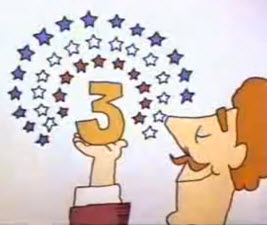Let the Band Ring Out and the Banners Fly: To promote or not to promote
Welcome back to my series on marketing and selling short fiction. I’ve written these posts in a very specific sequence, with each entry building on previous ones. You can read my earlier posts here.
This week, I’m wrapping up a mini-series on what happens when you finally sell a story. So far, I’ve covered short fiction contracts, working with an editor, what your first sale really means, and dealing with reviews.
This week, I deal with self-promotion for a writer, both for your first published story and your writing in general.
Promotion: How Much is Too Much?
The short answer is most of what you’re planning.
Look, I get it. You’ve sold a story to a pro market. You’ve dealt with the editing process graciously. Your story has been published. You’ve survived your first reviews, which hopefully were glowing.
Great going. So now you should promote the hell out of this amazing accomplishment, right?
Wrong.
Why? Because, as I said, you’ve sold a story. A story. One. Singular. Big whoop. Yes, as a beginner, it really is a big whoop. I remember. But in the world of publishing, you’re a newbie. No one cares, aside from you and your mother (and she’s just being polite).
(Oh, while we’re on the topic…this sale you just made was to a pro market, right? If not, please immediately cease any ideas about promoting your sale. You’ll just embarrass yourself.)
So What Should You Do?
Well, you could go and do something like…oh, gee, I don’t know, maybe…WRITE? You’re a WRITER, remember? Not a PR machine.
Go write your next story. Or two. Or three. Or get your next batch of submissions out there. Preferably both.
But don’t–please don’t–start promoting yourself from the rooftops or their internet equivalent. If you want to build your writing career from the fine start you’ve just given it, then go write more stories and send them out. Rinse and repeat. Visibility through more sales is always the best promotion for a writer.
Yeah, okay. I get it. You want to wave your flag at least a little bit. No problem. Just don’t overdo it. When you learn about the sale, do a tweet, a post to your blog, a post to Facebook. Then when the story comes out, repeat all of those, including a scan of the cover (hopefully with your name and story on it) and a link to where your growing legion of fans can find the story.
Also, don’t forget to update your standard cover letter to include your brand-new first professional sale. Read Part 10 for my advice on cover letters and why you should not include non-pro credits.
Visibility Tools for a Writer: The Minimalist’s List
If your response to any of that last section was “but I don’t tweet or blog or Facebook,” then let me outline the minimal set of visibility tools that a writer needs. Note that I call these visibility, not promotion, tools. Whatever you do related to “promotion” should focus on making yourself visible to and discoverable by readers.
Here’s my list, in priority order:
- A web site: Here’s my site. Check it out and check out other writers’ sites. As a beginner, you won’t need all of the pages I have. However, you’ll want some of what I list under “About Me / Media Kit,” specifically your writing bio, a photo (of you, not your cat), your soon-to-be-growing list of published fiction, a review page for your pull quotes, a contact page, and a way to subscribe to your mailing list (more on mailing lists below).
- A blog: My site has an integrated blog because that’s my preference. Your other option is to go with one of the more popular free ones like WordPress. Just make sure that you link your blog and website to each other.
- Twitter account: If you’ve been using Twitter for your non-writing persona, than you’ll need to get another account for your writing life. Here’s my Twitter page.
- Facebook account: For now, just a normal account is fine. You don’t need an author FB page yet. Hold off on that until you have a lot more creds and a fan following. This will also force you to still communicate like a friend and human being about non-writing stuff, and should help you keep your “me, me, me” writing posts to FB to a minimum.
- A mailing list: You’ll build this slowly, as your fan base grows beyond your family and cat. To start, make sure that your web site has a way for people to add themselves to your mailing list. Here’s my mailing list sign-up page on my website, which takes people to this form. I use Mail Chimp, which I’ve found to be excellent. They have a free account option that handles up to 2,000 subscribers.
More Advanced Tools
As you grow your writing credentials and you start publishing in book format (i.e., not just short stories in magazine and anthologies), or when you start putting up your own backlist as ebooks or print-on-demand books (more on that in a future post), you might then consider adding the following:
- A Facebook author page: I don’t have one of these yet. I probably should set one up sometime. Right now, I’d rather be writing.
- Retailer author pages: Retailer sites like Amazon offer the option of having your own author pages, where readers can easily find all of your books in one spot. Here’s my Amazon author page. As you see on the right, it allows me to automatically integrate my tweets and blog posts.
- Goodreads author page: Goodreads is supposedly the leading social media site for readers and reading. Again, once you have book length works available, you can consider setting up an author page.
- LinkedIn account and a Google+ author page: I make more use of my writing-life LinkedIn account than my Google+ page, simply because it’s easy to automate feeds to LinkedIn from my blog and from Twitter, but I haven’t found an easy way to do that for Google+ …which brings me to the next topic.
Making it Easy
If you do it right, you can minimize the work needed to ensure that your blog posts and tweets gets full exposure across all of your channels.
- Ensure that your blog has an RMS feed to which people can subscribe. This feed is also required to automatically imbed your blog posts in other sites. My blog automatically posts to my Facebook and LinkedIn accounts, as well as to my Goodreads and Amazon author pages.
- Set your Twitter account to automatically post to Facebook.
- I also use a free service called Twitterfeed to automatically send tweets whenever I make a new blog post, with a link in the tweet to the post. I use this same service to tweet whenever a new part in this series goes up, as well.
If You Want to Know More, You’re Missing the Point
I’m not going to attempt to tell you how to use any of the above tools beyond what I’ve said. The internet is awash with social media “experts” who are more than willing to give advice on how to write blog posts, how often to tweet, how to pick hashtags, what time of day to post, etc. etc. ad nauseum. If you want to chase down any of those experts, feel free. Your career, your decision. But if you do, you’ve entirely missed the point of this post. My advice: go write instead.
Next Week
This wraps up this mini-series (parts 17-24) on what happens after you sell your first story. Over the next few weeks, I’ll review your options for re-selling your story after it’s been published for the first time. If you want to do some homework for these upcoming posts, go back and reread my two posts on understanding rights (part 4 and part 5), on how to protect those rights in short fiction contracts (part 17), and on ensuring those rights revert to you (part 18).
Next Week: The Magic Bakery: Selling your story again (and again, and again…)
As always, please feel free to add comments and questions, and I’ll respond as best (and as soon as) I can.
~~~~~
PLAYING THE SHORT GAME — The Book!
I am thrilled to announce that I have now repackaged the 32 separate posts that make up this blog series into a book titled Playing the Short Game: How to Market & Sell Short Fiction. The book is completely updated and reorganized, with new material not in this blog series, plus an introduction from multi-genre, multi-award winning writer and editor, Kristine Kathryn Rusch. Here’s an extract from Kris’s intro:
Douglas Smith is the best person to write this book. … He’s one of the few people who has probably published more short fiction than I have, and in more countries, and more high-paying markets. He loves the short story as much as I do, and he’s good at writing them.
He’s just as good at the business side of the profession. He knows more about marketing short stories to other countries than I do. He understands how to manage short fiction contracts very well. He’s up-to-date on 21st century publishing practices, and he has a toughness that the best business people need.
We short story writers have needed a book like this for decades. I’m glad Doug decided to write it. Read and reread this volume. Because you’ll learn something each time you do. And take Doug’s advice. It’s spectacular.
—Kristine Kathryn Rusch
More information on the book, including full buying links for all major retailer sites, is available on my website here.
As a special offer to Amazing Stories readers, I’m offering discounts in my bookstore. Get the ebook or print edition at a discount by using the coupon codes AS-SHORT-E or AS-SHORT-P respectively at my website bookstore. Enjoy!











2 Comments